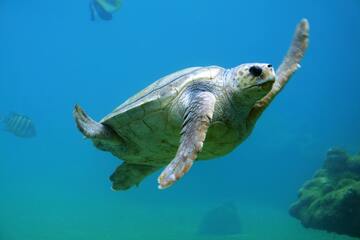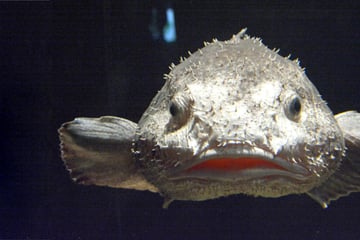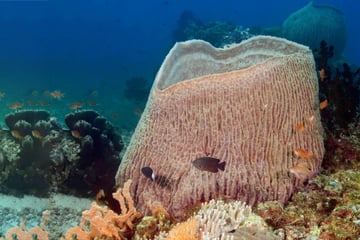What is the most venomous animal in the world?
Most people will think of a spider, a snake, or a scorpion when considering what is the most venomous animal in the world. However, the answer may surprise you. Let's take a look...
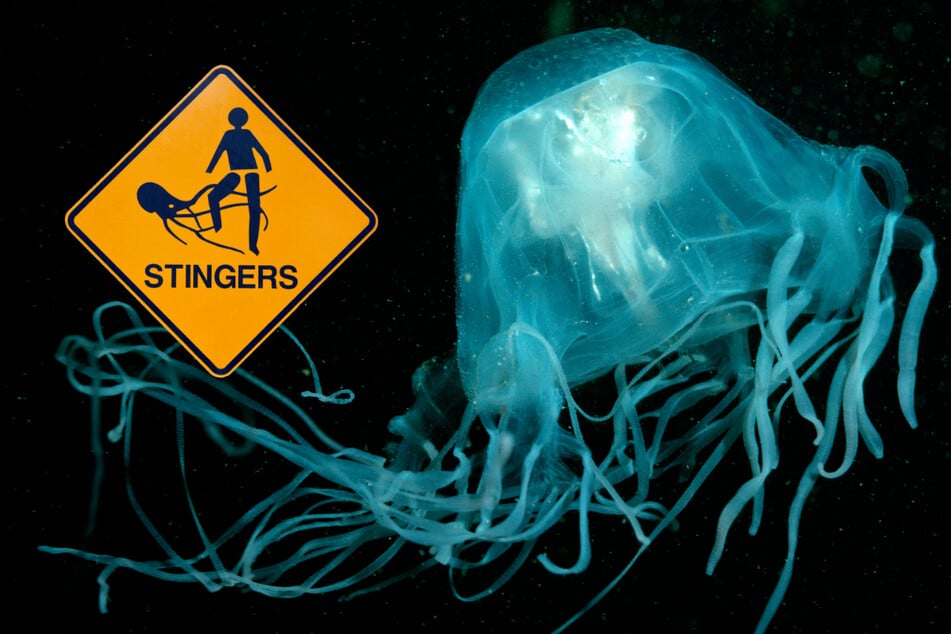
There are incredibly deadly animals in the depths of our oceans, upon the great southern plains of our continents, and flying in the wind. Some are not deadly through their behavior, but rather through the poison excreted into their victims. There are quite a few animals that are so poisonous, they'll off you instantly!
So, who holds the animal record for being the most dangerous animal on Earth, just how venomous is the world's most poisonous beast, and is it possible to survive its sting?
What's the world's most venomous animal?
What's so terrifying about the world's most venomous animals is that there is a legitimate reason for debate. The Box Jellyfish (Chironex Fleckeri) is widely believed to be the most poisonous, and it accounts for the most deaths and injuries, but in actuality, the tiny Irukandji Jellyfish has the most potent venom.
Interestingly, both of these beasts live in the north of Australia, along the east coast from around Cairns, up to Cape York. The debate here is not whether the poison itself is more venomous, but which is more deadly. As a result, we'll take a look at both.
The Box Jellyfish is the most terrifying, as it carries around 60 tentacles that can reach yards in length and are hardly noticeable in the water. Their bodies, though, are rather large and distinctive, visible to divers, swimmers, and snorkelers. These absolute beasts often exist in shallow waters, mangroves, and other areas.
Meanwhile, the Irukandji Jellyfish carries the more potent venom of the two, but it's less deadly because it is significantly rarer. This tiny, almost microscopic jellyfish was named after the Yirrganydji people (Indigenous inhabitants of the Djabugay nation). For thousands of years, Irukandji Syndrome developed in people who swam off the coast in the region, which was later found to be caused by the sting of these jellyfish.
How venomous is the most venomous animal?
Both of these jellyfish are some of the deadliest animals in the world. The amount of venom contained within a Box Jellyfish has the ability to kill up to 250 people. Luckily, they only transmit a small amount of their venom when they sting you, giving you a chance to survive.
That doesn't mean that a sting from this creature is always survivable. If you are diving, for example, the onset of symptoms could debilitate you to the point that you cannot reach the surface. Their venom attacks your nervous system, causing cardiovascular issues and even muscle paralysis. When diving, this could be deadly within minutes.
Meanwhile, the venom of the Irukandji Jellyfish is even more deadly. The difference is that it's less likely that you will be stung, and that the sting will be the cause of death. These tiny microscopic creatures deliver venom through thousands of injections. This causes brain hemorrhaging and cardiac arrest, which often occurs instantly.
They are known as the most lethal creature in the world, but there's another reason that the Irukandji Jellyfish have to fight the Box Jellyfish for the top spot. That reason is simple: the latter have taken more lives in recorded history, are more common, and more likely to kill as a result.
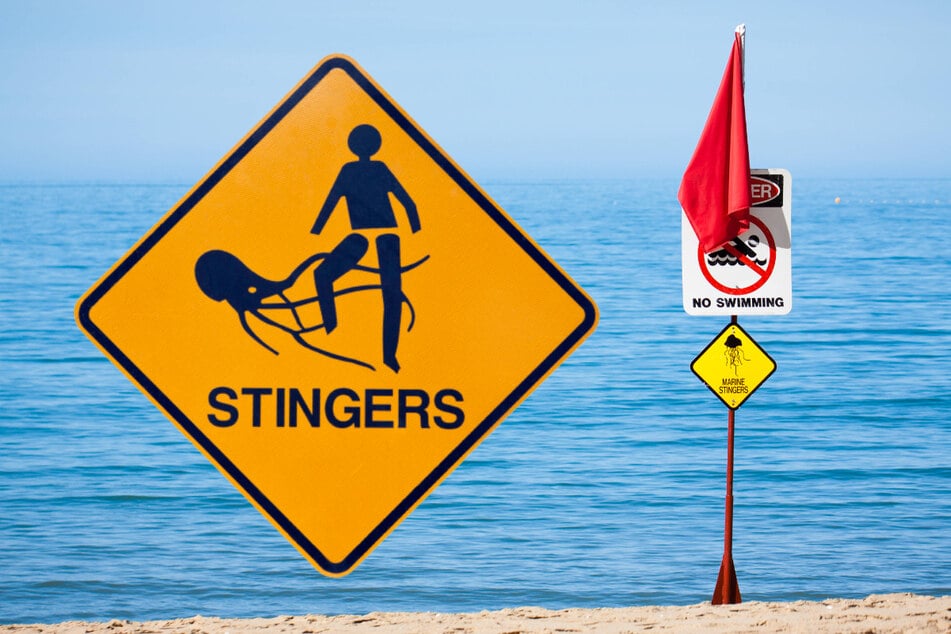
How to treat the most venomous animal sting
The best treatment is preventative treatment. If you want to avoid severe illness, don't get stung. This might seem like a no-brainer answer, but we've got some additional advice that comes with it!
Here's how to prevent getting stung by the most venomous animals in the world:
- Abide by the signs: On most patrolled beaches, there are signs. If a sign says not to enter the water, don't enter the water.
- Don't swim on non-patrolled beaches: Not every beach can be patrolled and checked. If it hasn't been patrolled, you have no guarantee of safety, so don't swim and bring shoes with you for beachside strolls.
- Avoid mangroves and shallow water in the north of Australia: If you are in the north of Australia, don't go swimming in shallow waters like mangroves. There are many nasty creatures that live in these areas, so it's best to steer clear.
- When you swim, cover-up: If you swim, whether on patrolled beaches or not, make sure that you wear a wetsuit or swimsuit and cover all the skin that you can!
When it comes to post-sting treatment, things change significantly. The most important thing is to call emergency services and get an ambulance to the victim as soon as possible.
Here's how to treat a venomous jellyfish sting:
- Get the victim out of the water as quickly as possible.
- Cover and soak the sting in vinegar.
- Call emergency services, contact any beach patrol staff.
- If the stinger is still there, carefully remove it (without touching it yourself) and soak the sting in vinegar (or, if not possible, salty seawater).
- Monitor the individual's pulse, breathing, and whether they are conscious.
- If necessary, begin resuscitation and CPR.
Extremely important: Make sure that you note what has happened to the receiver when you ring for the ambulance, so that the paramedics will come prepared. They will treat it as a chemical burn but will also be trained to treat severe poisonings like the one you'd be dealing with.
More of the most venomous animals in the world
There are many venomous animals residing upon the great green globe we live. Some will kill you easily, others are less likely to be fatal, but all are pretty nasty. What you will notice, though, is that the vast majority of seriously deadly and venomous animals live in the ocean. Go figure!
Here are ten of the most venomous animals in the world (in no particular order):
- Box Jellyfish
- Irukandji Jellyfish
- Funnelweb Spider
- Cone Snail
- Stonefish
- Inland Taipan
- Deathstalker Scorpion
- Blue-ringed Octopus
- Brown Snakes
- King Cobra
Most venomous land animal on Earth

The most venomous animal found on land is the Fennel Web Spider, a large and nasty ground-dwelling spider found in the Australian state of New South Wales. It is also considered the most dangerous animal, as it is far more common and far more likely to bite you than it is for you to encounter a Box or Irukandji Jellyfish.
The most venomous animal is incredibly frightening
Considering how shockingly deadly both the Box Jellyfish and the Irukandji Jellyfish are, it isn't surprising that people get pretty scared. The latter, which is also the more venomous, is even more frightening because unlike the Box Jellyfish (which is relatively large and visible), these tiny little animals can sting you without you even seeing it.
The most important thing you can do to protect yourself is two-fold: First, follow the beach signs! If it says don't swim, don't swim; Secondly, wear a wetsuit and cover up as much skin as possible when swimming in the north of Australia, or in any chilly body of water for that matter!
Cover photo: IMAGO / Ardea & IMAGO / YAY Images (TAG24 Edit)

